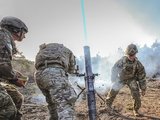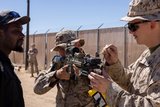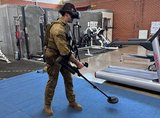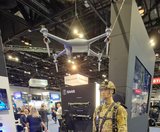Military Training magazine: Maintenance training; Laser-based TES and more
What’s inside this edition:
Comment: Unintended consequences
The increasing complexity of emerging technologies is placing pressure on the optimisation of military training. In particular, air force training comes at a premium, so the right balance of tools and techniques is crucial for cost-effectiveness.
Features include:
Torquing it up
Maintenance training has never been so important. As equipment costs rise and platforms become more sophisticated, maintaining high availability is a vital component of military preparedness. Shephard takes a closer look at what training technologies are being used in the land domain to keep platforms on the road.
The future is live
Laser-based Tactical Engagement Simulation Systems have been around for several decades, but some users are questioning whether they provide sufficiently realistic training. Shephard looks at what the latest laser systems are capable of and some future alternatives.
Going for a spin
The technology pilots use has greatly advanced over time, but the type of effects they experience has largely remained the same. The importance of g-force training must therefore be appreciated to ensure aircrew are ready for next-generation fighters.
Home on the range
As armed forces’ budgets rise again, live training is on the increase. But troops’ time on range in future seems likely to be a more hybrid affair that exploits a number of different technologies.
No hands on deck
Military USV and UUV markets are still at a relatively early stage of development. However, navies and industry are assessing training needs for the systems and asking how technology can enhance the process.
Bonus content coming soon.
More from Training
-
![Cubic tailors mortar simulator for the US Army]()
Cubic tailors mortar simulator for the US Army
The company’s mortar trainer received improvements based on soldier’s feedback.
-
![Saab expands footprint in the US]()
Saab expands footprint in the US
The company will operate in two new locations in the coming years to better support US services.
-
![How terrain management capabilities can improve military training]()
How terrain management capabilities can improve military training
This type of tool provides more realistic training easing the incorporation of new scenarios that accurately represent the threats of the battlefield.
-
![I/ITSEC 2024: Australian Army approaches second phase of countermining training]()
I/ITSEC 2024: Australian Army approaches second phase of countermining training
The Engineering Corps has been conducting individual instruction using FLAIM Systems’ Sweeper and should start collective deployments in 2025.
-
![I/ITSEC 2024: Zeiss introduces Velvet 4K SIM projector for night flight simulation]()
I/ITSEC 2024: Zeiss introduces Velvet 4K SIM projector for night flight simulation
The next-generation platform is motion-compatible and can be used in OTW and NVG applications.
-
![I/ITSEC 2024: Saab introduces UAV live training capability]()
I/ITSEC 2024: Saab introduces UAV live training capability
The system can be used to prepare soldiers for both drone offensive operations and CUAS missions.



























